In 2008 I built a data logger based on the design found on The Backshed website but used a different micro controller. The purpose of the data logger was to obtain relevant data from my toy turbines so that I could evaluate their performance and see if my tinkering had any effect on their performance.
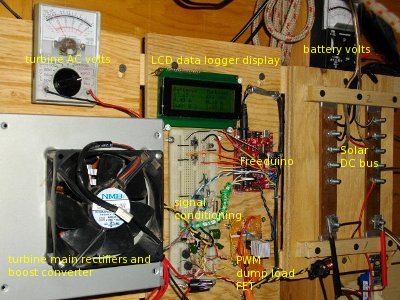
In March of 2010 I finally got the data logger connected to the 0.6m turbine and for the next 8 months the data logger recorded several gigs worth of data. The parameters recorded were wind speed (anemometer just below the turbine), turbine RPM, current to battery, boost input voltage, air temperature, and battery voltage.
Just plotting the raw data did not reveal any useful information. You could sort of see some curves but you really had to use your imagination. The curves did not appear until I learned about creating wind speed bins and using statistical methods to group the data into bins.
So here are the plots of the data obtained from the 0.6m toy turbine running from March 2010 to October 2010. The accuracy of the data is ... well... it gives you a rough idea of what is going on. And in the end the turbine is just a toy

.
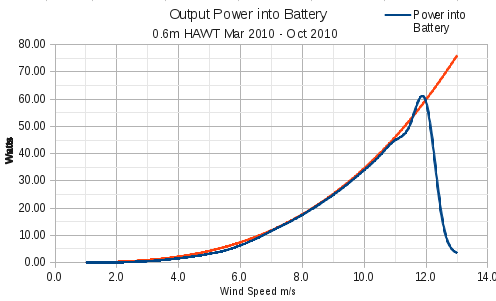
The red line is the blade power at 20%.

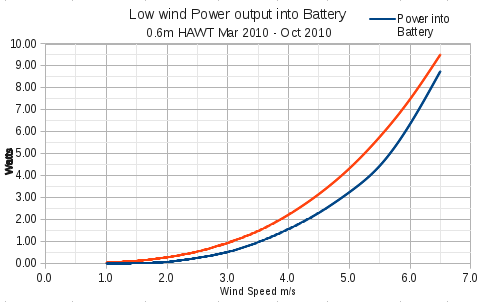
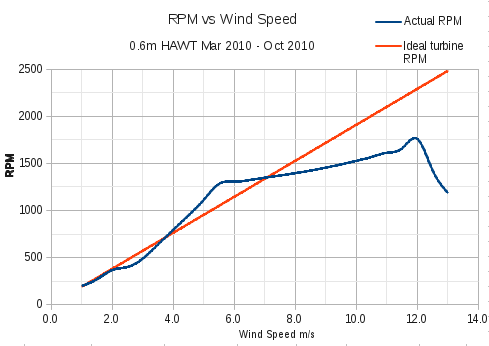
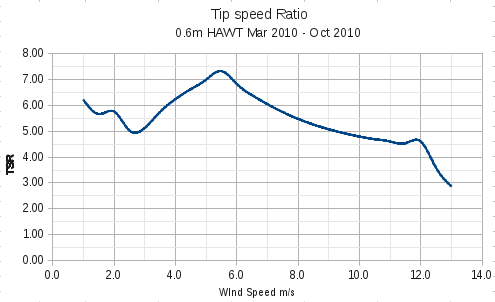
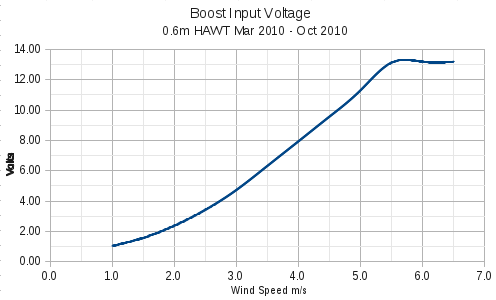
The boost converter is powered by the turbine and starts outputting when the boost input voltage is about 0.8vdc. The original plan was to have the alternator putting out about 6vdc into the boost converter at about 3m/s but as you can see from the graphs that did not happen. After casting and testing the stator I realised that there was a problem. I rechecked my notes and to my dismay they said to do 10 turns per coil but I had done 8 turns per coil. Oh well.
I thought overall efficiency would have been up around 25% but the turbine just barely hits 20% after about 7m/s when the main rectifiers take over from the boost converter. At first I blamed the boost converter for the low performance below 7m/s but after separately testing the boost converter efficiency, I now know that its the blades. I calculated the Reynolds numbers for the blades at the low wind speeds and looked up some airfoil Cp/Cd graphs at low Reynolds numbers. Michael Selig's website
http://www.ae.illinois.edu/m-selig/ has a wealth of info on low Reynolds airfoils. My blades have a thickness of about 9% and use an airfoil similar to a Clark Y. Looks like the Clark Y is not very good below a Reynolds of 60,000 (high drag and low lift). Anyway, that is another story.
The boost converter definitely needed to be adjusted/tuned. The turbine was running a little fast from 4.5 m/s to about 7m/s. Design TSR for the blades was 6. It took about 2 weeks of tweaking before I had a flatter TSR graph below 7 m/s. In the end it didn't improve the turbine output performance much.
The turbine furls at about 12 m/s and after that the power output drops drastically. I was hoping to get a more gradual drop in power or even better would be the power output plateaus at 12 m/s and above. The stator only has 22 AWG wire and I didn't feel comfortable with more than 4.5 amps going through the stator so chose an early furl of 12 m/s. Having the blades spinning at over 2000 RPM was also a concern. Unfortunately furling is not always exact and output amps have been higher for very short periods of time. The turbine has been through 2 hurricanes and 7 tropical storms and is still spinning after two years so I guess its ok.